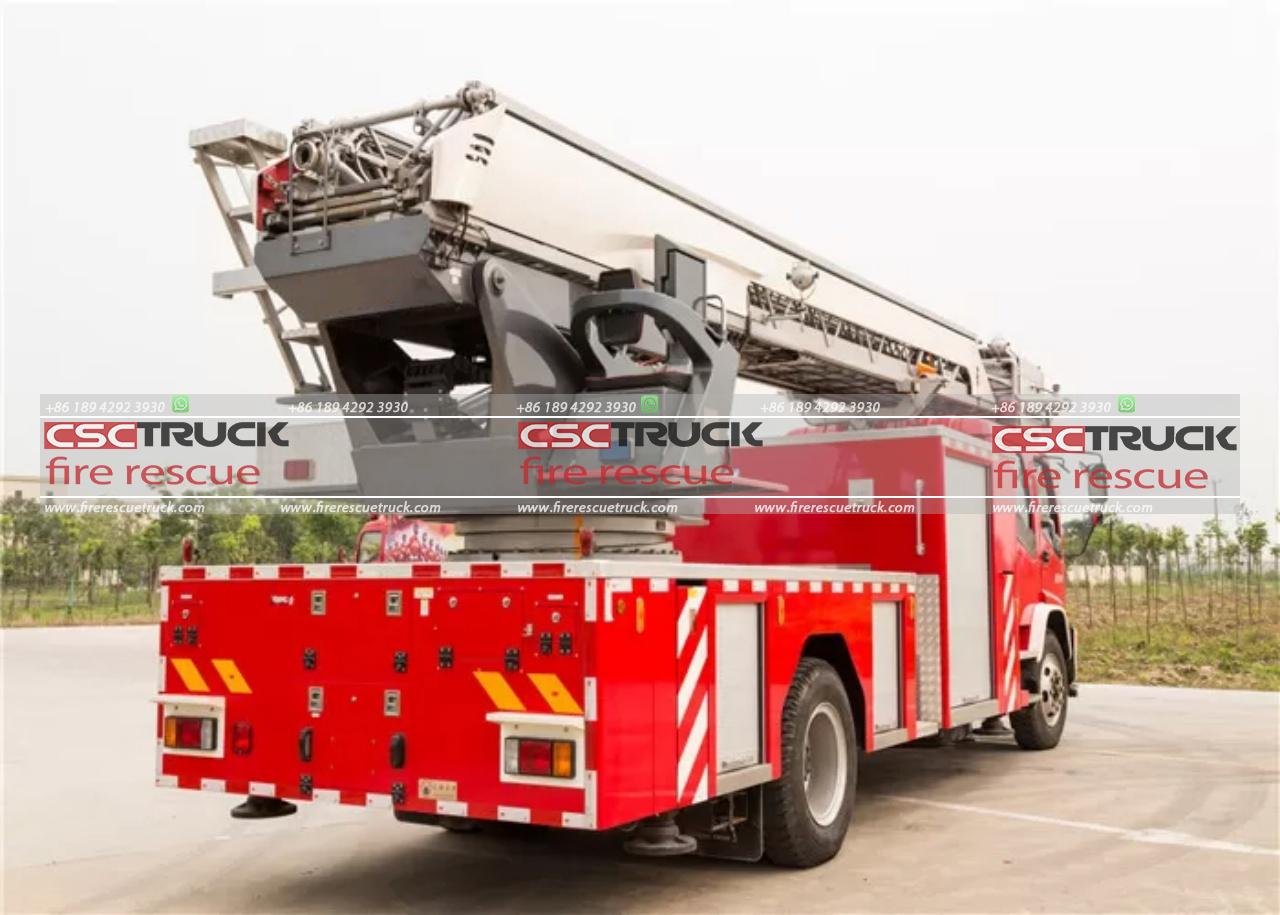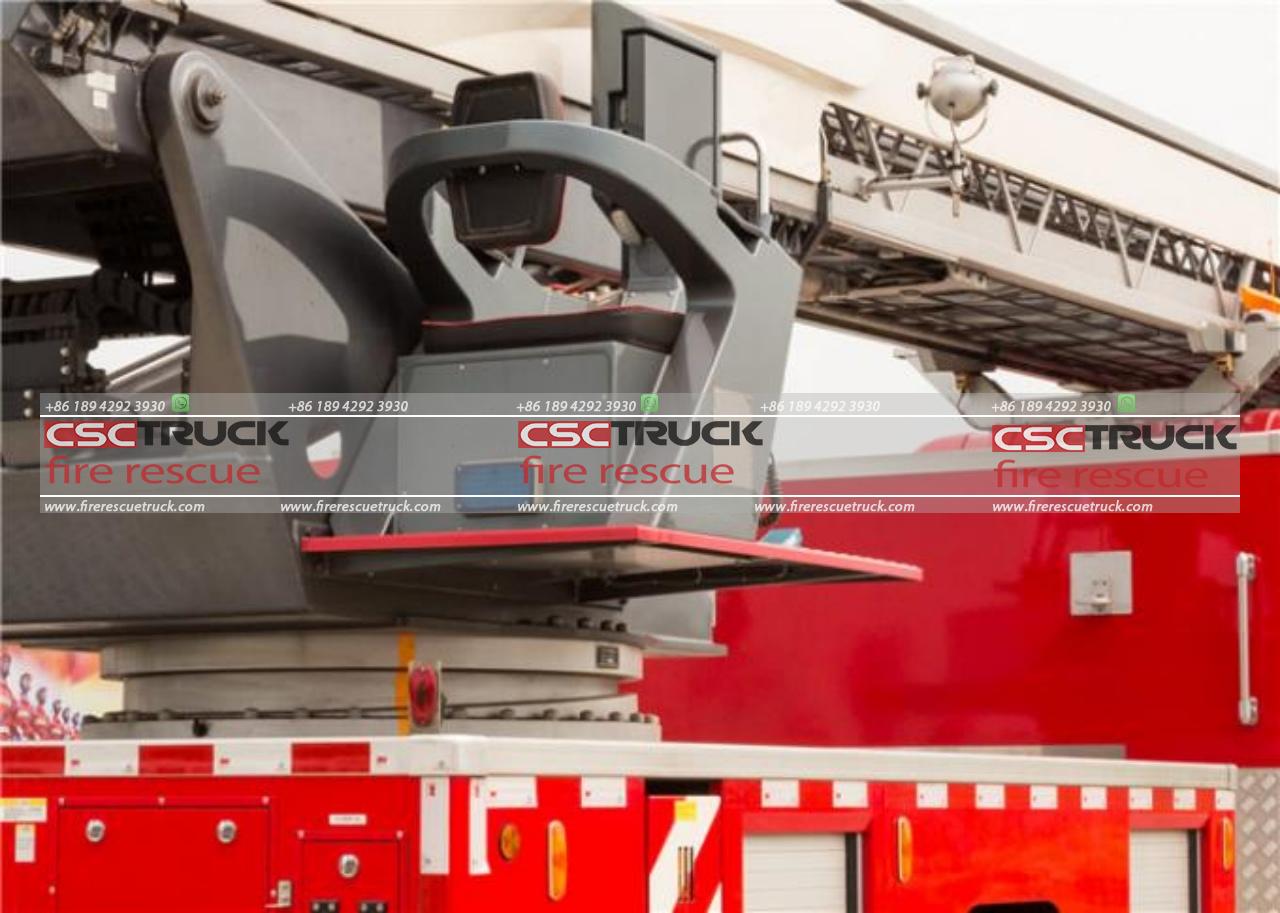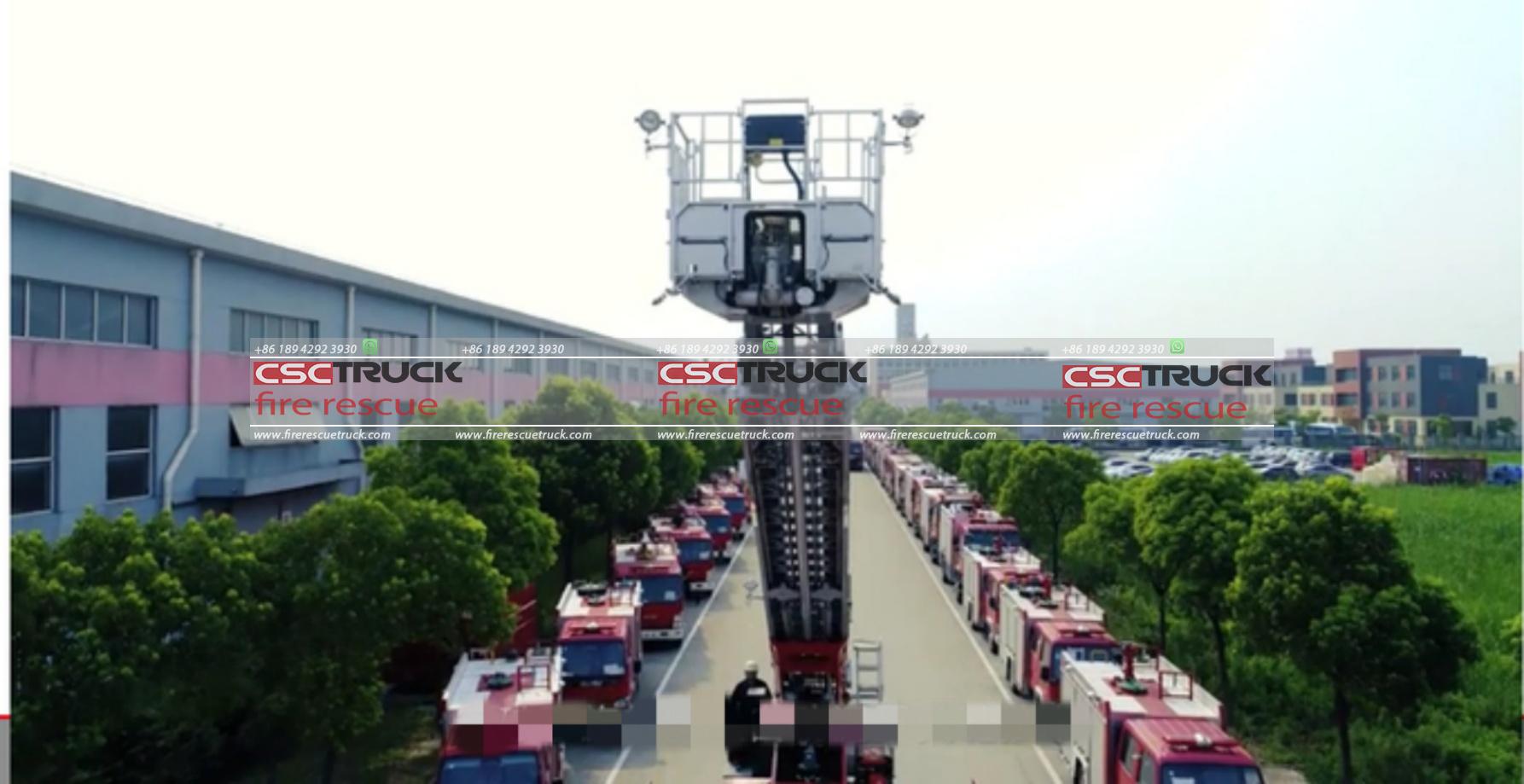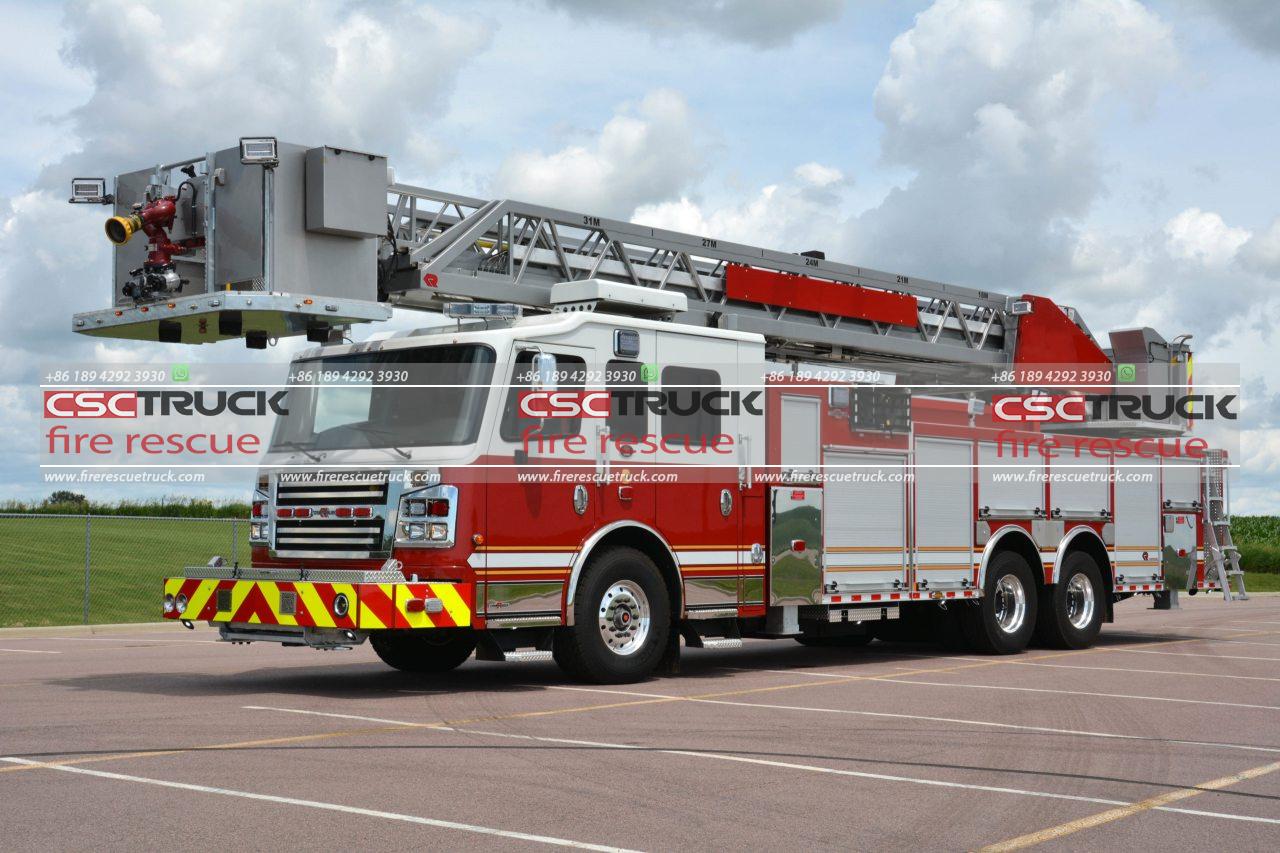How Does a Fire Ladder Work?
Fire ladders are essential tools in firefighting, allowing firefighters to access elevated areas, rescue people from tall buildings, and direct water onto flames from above. A modern fire ladder, particularly the aerial ladder mounted on fire trucks, incorporates intricate engineering to ensure stability, reach, and flexibility. In this article, we’ll delve into the mechanisms behind fire ladders, from their components and operation to the role they play in fire response and rescue.
Components of a Fire Ladder
Modern fire ladders are engineered to support significant weight and reach great heights, often extending over 100 feet. To achieve this, fire ladders are typically divided into sections and contain multiple crucial components that contribute to their effectiveness:
1. Aerial Ladder Sections
A fire ladder typically comprises multiple telescoping sections, allowing it to extend and retract. These sections slide in and out of each other, giving the ladder its extendable reach. High-grade steel or aluminum is often used to build these sections, ensuring they remain lightweight yet durable enough to handle substantial loads.
2. Hydraulic System
The hydraulic system is the powerhouse of the ladder. Fire ladders use hydraulic pumps and cylinders to extend, retract, and elevate the ladder. By pressurizing hydraulic fluid within these cylinders, firefighters can control the ladder’s movement with high precision and minimal physical effort.
3. Turntable
Mounted on a rotating turntable, the ladder can swivel 360 degrees, giving firefighters the ability to position the ladder without moving the truck. The turntable allows full rotational freedom, which is essential for quickly reaching various angles during a rescue operation.
4. Control Panels
Control panels are typically located both in the fire truck cab and near the ladder itself. These panels provide firefighters with controls to extend, rotate, and adjust the ladder’s position. The control system often includes joystick or lever controls to manage hydraulic pressures and ensure safe, precise adjustments.
5. Outriggers
Outriggers are extendable legs that stabilize the fire truck before deploying the ladder. These stabilizers prevent the truck from tipping over by increasing the base area and redistributing weight. Outriggers are essential, especially when the ladder is fully extended or carrying heavy loads at great heights.
6. Rung Locks and Safety Features
Fire ladders are equipped with rung locks that automatically engage when the ladder is extended. Rung locks prevent the sections from slipping or retracting unexpectedly. Additional safety features, like sensors and interlocks, are installed to ensure the ladder does not exceed its recommended load or angle limits.

How the Fire Ladder Mechanism Works
The ladder deployment process begins with parking the fire truck at a safe distance from the building and deploying the outriggers. Once stabilized, the hydraulic system activates, and firefighters can then control the ladder to position it for rescue or fire suppression. Here’s a step-by-step look at how this is done:
1. Outrigger Deployment
Before raising the ladder, firefighters deploy the outriggers from each side of the truck. The outrigger system extends from the truck, providing a broad base that stabilizes the vehicle. Once the outriggers are fully deployed, hydraulic pads or ground plates ensure that the weight of the extended ladder is evenly distributed, minimizing the risk of tipping.
2. Turntable Activation
With the truck stabilized, the firefighter can then control the turntable to rotate the ladder in the desired direction. The turntable’s rotation allows precise positioning of the ladder without the need to move the truck. This capability is especially valuable in tight urban environments or when buildings are close together.
3. Raising and Extending the Ladder
The ladder is raised vertically using the hydraulic system, which powers a set of cylinders connected to each ladder section. By adjusting hydraulic pressures, firefighters can control the ladder’s extension smoothly and incrementally. For added control, some fire ladders are equipped with articulating booms, allowing them to bend at certain points, and giving firefighters increased access to tricky areas.
4. Positioning and Locking the Ladder
Once extended to the desired height, the ladder sections are locked into place with an automatic locking system. This prevents any unintended retraction or movement, ensuring a stable base for firefighters climbing or positioning hoses on the ladder.
5. Load Management and Safety Features
Fire ladders are designed with load management systems that alert the operator if the ladder is overextended or overloaded. Safety interlocks often limit the ladder’s movement if certain angles or loads are exceeded, preventing accidents. Many modern fire ladders also have sensors to monitor wind speed, as high winds can increase the risk of tipping.
Key Functions of Fire Ladders in Firefighting
The fire ladder’s design and operation allow it to perform several critical functions during firefighting:
1. Rescue Operations
Fire ladders are indispensable in rescue operations. Aerial ladders allow firefighters to reach high floors in multi-story buildings, providing a route for occupants to climb down or for firefighters to climb up and carry people to safety. This function is especially vital when internal staircases are blocked by fire or smoke.
2. Ventilation Support
Firefighters sometimes use fire ladders to reach high windows or roofs for ventilation purposes. By breaking windows or cutting holes in roofs, firefighters can allow smoke and heat to escape, slowing the spread of the fire and improving visibility.
3. Water Distribution from Above
Aerial ladders often have water pipes or hoses attached to deliver water from elevated heights directly onto the flames. This is particularly useful for reaching fires on higher floors or in confined spaces where traditional firefighting methods might be less effective. Some ladders come equipped with a nozzle that can be remotely controlled, directing water with minimal human intervention.
4. Bridge or Platform for Accessing Hazardous Areas
The fire ladder can act as a bridge or platform to allow firefighters access to difficult-to-reach areas. In industrial sites or areas where reaching the ground level is hazardous, a fire ladder can offer a safe way to enter and exit the scene.

Advances in Fire Ladder Technology
Modern fire ladders are continuously evolving with technological advances that improve safety, functionality, and ease of use:
1. Automated Control Systems
Many ladders now feature automated controls that assist firefighters in positioning the ladder quickly and accurately. Advanced control systems include computer-aided stability monitoring, which helps maintain optimal positioning in real time.
2. Thermal Imaging and Camera Systems
Some fire ladders are equipped with thermal imaging cameras, enabling firefighters to detect heat sources and flames through smoke. These cameras are mounted near the ladder’s top, giving firefighters a clear view of the fire’s intensity and location from a safe distance.
3. Composite Materials
While most fire ladders are made from aluminum or steel, some manufacturers are experimenting with composite materials. These composites can reduce the weight of the ladder, making it easier to deploy while retaining the strength necessary for firefighting.
Challenges in Fire Ladder Operation
Operating a fire ladder requires training, as improper use can lead to severe accidents. Conditions like strong winds, poor visibility, and uneven ground make ladder operations more challenging. Additionally, the height and weight limitations of fire ladders restrict their use in extremely tall buildings, where alternative methods, like internal evacuation systems, may be needed.

Conclusion
A fire ladder is a complex tool combining hydraulics, physics, and precision engineering to offer firefighters the height, reach, and flexibility they need during emergencies. From rescues to firefighting and ventilation support, fire ladders are versatile and indispensable in firefighting. As technology continues to advance, fire ladders will likely evolve, becoming safer, more efficient, and capable of supporting even more diverse functions in firefighting and rescue operations.







